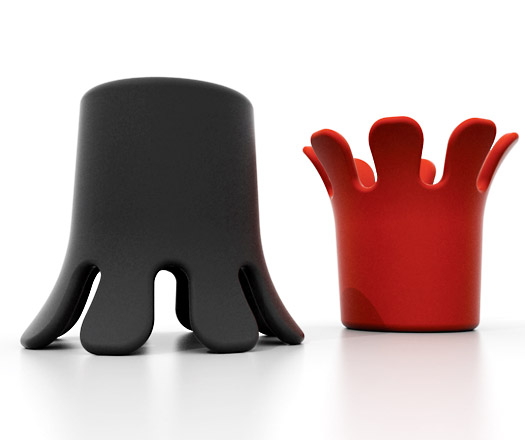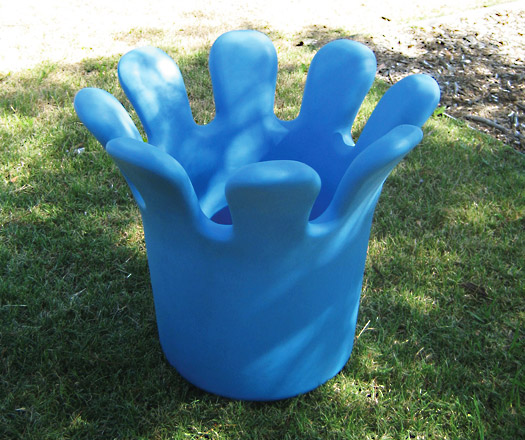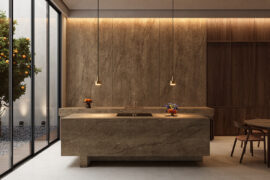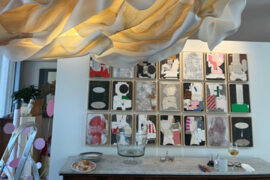This prototype by designer Kristian Aus borrows cues from a classic video game.
February 11th, 2009
Young Australian designer Kristian Aus recently won The Edge commercial award for his ‘Metal Petal Lamp’ – a product that has received astounding success in recent years. However it was another of his designs entered into the competition that caught our attention.
The ’Anemone Outdoor Stool’ is still just a prototype, but we doubt it will stay that way for long. The moulded Poly-ethylene stool, with its (almost limitless) colour options is actually the result of an interesting obsession.
“My growing addiction to retro video-games had also poked its nose into the design process on this project. There are visual cues that have been borrowed from the ghosts in the classic game Pac-man,” he says.
The design can be used as a stool, or for storage (when placed upside-down) for umbrellas, toys or a party talking point as an ice bucket. “The design came out of the desire to work on something that was colourful and fun, that didnt take itself too seriously,” Aus says.
Resembling a sea anemone Aus says the object invites people to engage with it. “The form is a mixture of hard and crisp geometric shapes and edges combined with flowing and organic tendrils.”
The roto-moulded construction maintains a smooth consistent feel inside and out and the stool can also be produced in an upholstered version for indoors.
“I’m looking forward to 2009 as I am hopeful that the global financial difficulties will encourage people to invest in good design at an early stage and in all stages of a product’s life-cycle.”
Aus is on the search for a manufacturer or furniture brand to take on the ‘Anemone Outdoor Stool’.
Autumn Products
autumnproducts.com.au


INDESIGN is on instagram
Follow @indesignlive
A searchable and comprehensive guide for specifying leading products and their suppliers
Keep up to date with the latest and greatest from our industry BFF's!

For Aidan Mawhinney, the secret ingredient to Living Edge’s success “comes down to people, product and place.” As the brand celebrates a significant 25-year milestone, it’s that commitment to authentic, sustainable design – and the people behind it all – that continues to anchor its legacy.

A longstanding partnership turns a historic city into a hub for emerging talent

DKO threw an alleyway party to celebrate their new home in Redfern – complete with burgers and a live rock band.
The internet never sleeps! Here's the stuff you might have missed

Cosentino introduces Éclos®, a new mineral surface brand featuring zero crystalline silica, high recycled content and Inlayr® technology that brings 3D layered realism to design.

Held in a private Melbourne residence, Fletcher Arts’ annual exhibition unites over 30 Australian artists and designers in a setting where art meets architecture.